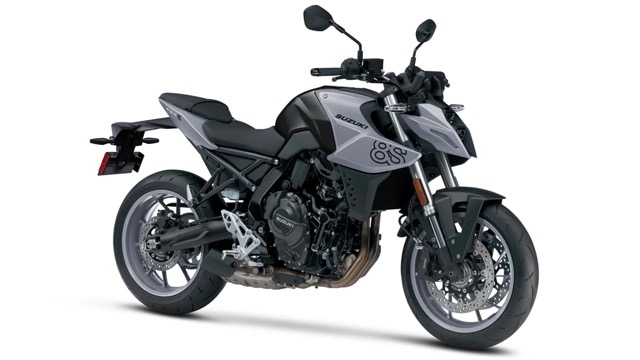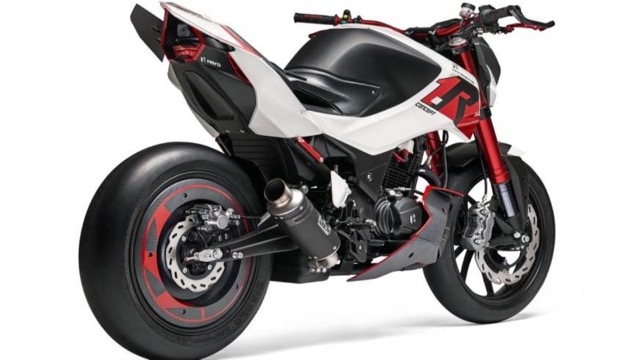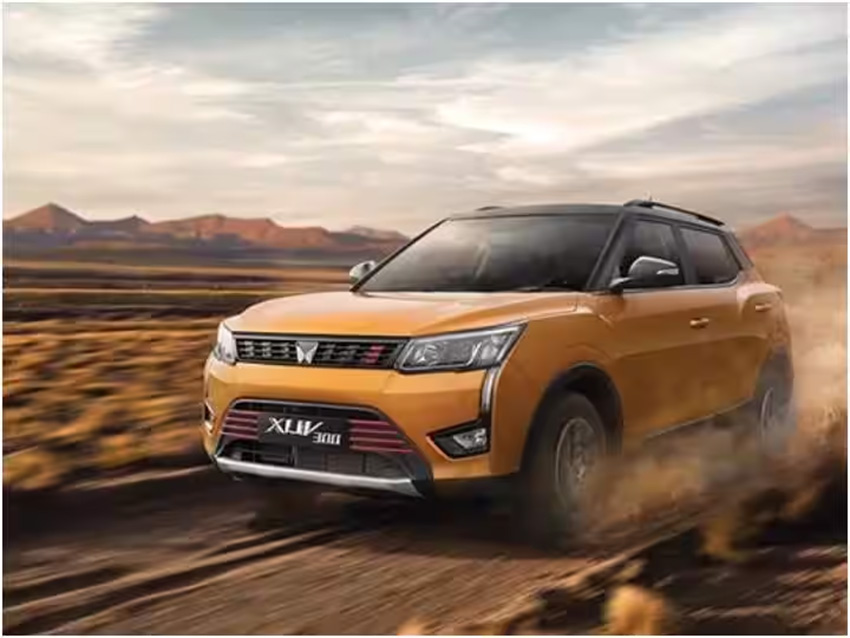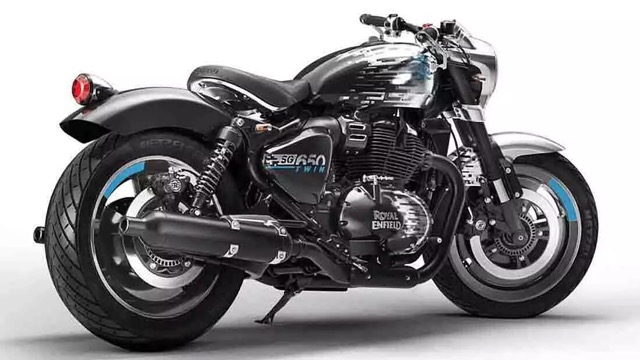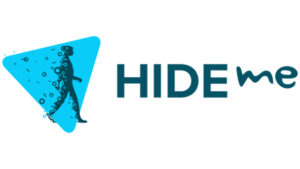Gap Insurance In the event of your car being completely damaged or stolen, the last thing you’d want to find out is that you still owe more on the car loan than the car’s actual value. If you have collision or comprehensive coverage, your car insurance company will compensate you with the car’s value in case of a total loss, not the amount you owe on the car loan or lease. However, if your car’s worth is less than what you owe, gap insurance can assist in covering the difference.
Outlines Of Guide
ToggleGap Insurance 2025
Gap insurance is a type of insurance coverage that is designed to protect you financially in the event that there is a “gap” between the amount you owe on your vehicle and its actual cash value. This can occur if your vehicle is totaled or stolen, as your insurance company will typically only reimburse you for the current market value of the vehicle at the time of the loss. However, if you still owe more on your loan or lease than the vehicle is worth, you could be left with a significant financial burden.
Gap insurance works by covering this difference between what your primary auto insurance policy covers and what you still owe on your loan or lease. It can help to pay off the remaining balance so that you are not left with any out-of-pocket expenses. Gap insurance can be especially beneficial if you have a high-interest rate loan, made a small down payment, or financed a vehicle with a long-term loan. It provides peace of mind knowing that you are protected financially in case of an unfortunate event involving your vehicle.
What Is Gap Insurance?
Gap insurance is a form of car insurance that can be bought to provide protection if your car is totaled and the compensation you get does not fully cover the amount you owe on your loan or lease. If the balance of your car loan exceeds the vehicle’s book value, gap insurance can make up the shortfall.
How Does Gap Insurance Work?
In the event that your car is declared a total loss under collision or comprehensive insurance, your insurer will provide a payout equivalent to the vehicle’s pre-incident value. Gap insurance, also known as loan/lease coverage, bridges the gap between your outstanding balance and the value of your stolen or totaled vehicle. It is a requirement to have collision and comprehensive insurance in place to be eligible for gap coverage.
This is how a standard gap insurance claim operates:
In the event of your vehicle being stolen or damaged in an accident covered by your auto insurance, you will need to file a claim under the collision or comprehensive insurance section of your policy, depending on the coverage. Your insurance company will compensate your lender with the actual cash value (ACV) of your car. If the amount you owe on your loan exceeds the ACV, gap insurance can bridge the gap.
Example of How Gap Coverage Can Help
| Car loan left to pay | $20,000 |
| Actual cash value of car | $17,000 |
| Comprehensive or collision deductible | $500 |
| Insurance company pays lender | $16,500 |
| How much you would still owe lender without gap insurance | $3,000 |
If you do not have gap insurance and the amount you owe on your loan or lease is higher than the value of your car, you will have to cover the remaining amount of the loan yourself. For instance, in the scenario mentioned earlier, gap insurance would pay the $3,000 still owed to the lender, so you would not have to come up with the money to pay it off personally. Some lenders or leasing companies may mandate gap insurance to safeguard them in case car owners abandon a loan or lease due to the car being totaled or stolen. Certain gap insurance policies may provide coverage for the total loan balance, which includes negative equity rolled into a new car loan. For instance, if you trade in a car for which you owe more than its value, that negative equity is rolled into the new loan. However, not all gap insurance policies cover negative equity, so ensure that you purchase a policy that does if you have rolled negative equity into your new car loan. When you no longer require gap insurance—due to your loan balance being roughly equal to or less than your vehicle’s value—you can remove it from your policy.
What Does Gap Insurance Cover?
Gap insurance pays for the disparity between your car loan/lease balance and the total loss payout from your car insurance company, minus the deductible. It is only necessary if you owe more on your vehicle than its current value.
Does Gap Insurance Cover Theft?
Yes, gap insurance will pay if your car is stolen.
Does Gap Insurance Cover Engine Failure?
Gap insurance does not provide coverage for engine failure. It only offers payment in the event of a total loss of your vehicle, such as through an auto accident or theft. Mechanical problems are not included in the coverage of car insurance or gap insurance.
Does Gap Insurance Cover Transmission Failure?
No. Gap insurance doesn’t cover transmission failure or any other mechanical repairs.
Does Gap Insurance Cover Death?
Gap insurance coverage only provides compensation for the complete loss of your vehicle and does not include coverage for injuries, fatalities, or funeral expenses. The liability section of a car insurance policy includes coverage for accidental death of others, while personal injury protection or medical payments coverage can cover funeral expenses for you and your passengers.
Does Gap Insurance Cover Your Deductible?
Gap insurance bought from a car insurance company typically does not include coverage for your collision or comprehensive deductible. If you have a $3,000 gap after your collision insurance pays out and a $500 collision deductible, the gap insurance will cover $2,500, leaving the $500 deductible amount. Some dealership-offered gap insurance policies may cover your primary insurance policy’s deductible, but it’s important to note that dealer-purchased gap insurance is usually more costly than purchasing it from a car insurance company.
What Doesn’t Gap Insurance Cover?
- Your car insurance deductible.
- Overdue payments and late fees on your car loan or lease.
- Security deposits.
- Extended warranties.
- Carry-over balances from previous loans or leases.
- Lease penalties for high mileage or excessive use.
- Charges for credit insurance connected to the loan.
- A down payment for a new car.
Do I Need Gap Insurance?
Whether you require gap insurance depends on the remaining balance of your car loan or lease and the appraised value of the vehicle. If you have sufficient resources to cover the “gap,” then gap insurance may not be necessary. For instance, if your car is valued at $10,000 and you owe $12,000 on the loan, you may be comfortable covering the shortfall if the car is declared a total loss. However, if you have a $30,000 car loan on a $22,000 car, you may find it challenging to bridge the $8,000 gap. In such a scenario, opting for gap insurance may become a necessity.
Is Gap Insurance Worth It?
Gap insurance is a type of coverage that can be highly beneficial if you owe more on your car loan or lease than what your vehicle is worth. While it may seem like an unnecessary expense, the relatively small cost of gap insurance can save you from significant financial loss in the event of an accident or theft. Without gap insurance, you could be left responsible for paying the difference between what your car is worth and what you still owe, which could amount to thousands of dollars. By investing in gap insurance, you can have peace of mind knowing that you are protected from such unexpected expenses.
Gap Insurance May Make Sense If.
- You lease your car.
- You took out a car loan of five years (60 months) or longer.
- You financed most of the car and made a small down payment of your car of less than 20%.
- You rolled negative equity from your last car loan into your new car loan (make sure you get a policy that covers negative equity).
- You bought a vehicle that depreciates in value faster than other vehicles (more on that below).
Gap Insurance May Not Make Sense If.
- The amount you owe is less than the car’s value, or only a little more.
- You can afford to pay the difference between the amount owed and the car’s value.
Gap insurance is no longer necessary once the amount you owe is equal to or slightly more than the car’s value. This is because there will be minimal or no gap insurance payout. For instance, if you owe $15,000 and your car’s value is $17,000, there will be no gap if your car is totaled or stolen. Additionally, if you decide to sell your car, it’s advisable to cancel the gap insurance.
Where Can I Buy Gap Insurance?
You can typically buy gap insurance from:
- Car insurance companies
- Car dealerships
- Banks and credit unions
Insurance Companies That Sell Gap Insurance
Many car insurance companies that offer gap insurance, such as:
- Allstate
- American Family
- Auto-Owners
- Erie
- Nationwide
- Progressive
- Shelter
- State Auto
- Travelers
- Westfield
Gap Insurance 2025 Pros and Cons
| Pros of gap insurance | Cons of gap insurance |
|---|---|
| Covers the insurance gap when you owe more than your vehicle is worth | Extra cost |
| No deductible | If added to a car loan through a dealer, you could pay loan interest on whatever gap costs |
Cost of Gap Insurance
On average, Forbes Advisor’s analysis shows that gap insurance costs around $61 per year. When compared to purchasing from a car dealership, obtaining gap insurance through a car insurance company is significantly more affordable. Although purchasing gap insurance from a car dealership may appear convenient, it often results in higher long-term costs. Trusted Choice reports that car dealerships typically charge up to $600 for gap insurance, which can be included in your loan. While it’s possible to roll the cost of gap insurance into your car loan, this means paying interest on it and losing the option to cancel the insurance separately. Consequently, you may end up paying for coverage that is no longer beneficial.
Cost of Gap Insurance by Company
| Company | Average annual cost of gap insurance |
|---|---|
| Travelers | $34 |
| Progressive | $38 |
| Auto-Owners Insurance | $48 |
| American Family | $51 |
| State Auto | $52 |
| Erie | $58 |
| Shelter | $141 |
| Westfield | $70 |
| Average | $61 |
Alternatives to Gap Insurance
Certain car insurance providers provide additional coverage options that may seem comparable to gap insurance. Here are two substitutes for gap insurance that could capture your interest.
New Car Replacement Coverage
New car replacement coverage provides reimbursement for the replacement of your totaled or stolen vehicle with a new car, without factoring in depreciation. Eligibility for this coverage is subject to the age and mileage requirements of the vehicle, and it typically includes a deductible. Some companies that offer this coverage include: [List of companies].
Amica
Amica includes new car replacement coverage in its Platinum Choice Auto package, which replaces a totaled vehicle with a new car if it is less than a year old and has fewer than 15,000 miles..
Farmers
Farmers provide new car replacement coverage, which offers a vehicle of the same make and model if your car is totaled within the first two model years and 24,000 miles.
Nationwide
Nationwide offers a unique benefit for its customers by providing new car replacements for vehicles that are less than three years old. This means that if your car is involved in an accident and deemed a total loss, Nationwide will replace it with a brand new car of the same make and model. This feature provides peace of mind to drivers who want to ensure they are protected in case of an unexpected event. Additionally, this service can save customers money in the long run, as they won’t have to worry about depreciation costs or settling for a used car replacement.
Better Car Replacement Coverage
Certain auto insurance providers, like Horace Mann and Liberty Mutual, provide “better car replacement” coverage, which compensates you for a newer or upgraded version of your totaled vehicle. This coverage may come with specific mileage restrictions. For instance, Liberty Mutual will compensate you for a car that is one model year newer and has 15,000 fewer miles than the totaled vehicle. This optional coverage is exclusively for policyholders who own their vehicles and is not offered for leased cars.
Vehicle Depreciation Could Weigh Into Your Gap Insurance Decision
If you have a substantial car loan or purchased a vehicle that depreciates rapidly, gap insurance becomes a more favorable option. According to a study by iSeeCars, the average car depreciates by 38.8% after five years, based on an analysis of over 1.1 million car sales. However, electric vehicles depreciate at a quicker rate compared to other vehicle types, losing approximately half of their value within five years.That may influence the insurance cost of the most and least expensive vehicles to insure.
Top 10 Vehicles With the Highest Depreciation Over Five Years
Some luxury car models experience a significantly faster rate of depreciation. For instance, the Maserati Quattroporte, BMW 7, and Maserati Ghibli all lose over 60% of their value within five years.
| Vehicle | Average 5-year depreciation |
|---|---|
| Maserati Quattroporte | 64.5% |
| BMW 7 Series | 61.8% |
| Maserati Ghibli | 61.3% |
| BMW 5 Series (hybrid) | 58.8% |
| Cadillac Escalade ESV | 58.5% |
| BMW X5 | 58.2% |
| Infiniti QX80 | 58.1% |
| Maserati Levante | 57.8% |
| Jaguar XF | 57.6% |
| Audi A7 | 57.2% |
Vehicles With the Lowest Depreciation Over Five Years
Vehicles that depreciate the least include the Porsche 911, Porsche 718 Cayman and Toyota Tacoma.
| Vehicle | Average 5-year depreciation |
|---|---|
| Porsche 911 (coupe) | 9.3% |
| Porsche 718 Cayman | 17.6% |
| Toyota Tacoma | 20.4% |
| Jeep Wrangler/Wrangler Unlimited | 20.8% |
| Honda Civic (sedan/hatchback) | 21.5% |
| Subaru BRZ | 23.4% |
| Chevrolet Camaro | 24.2% |
| Toyota C-HR | 24.4% |
| Subaru Crosstrek | 24.5% |
| Toyota Corolla | 24.5% |
| Ford Mustang | 24.5% |
Green Vehicle Depreciation Over Five Years
Considering transitioning to an electric or hybrid vehicle for environmental reasons? Hybrid vehicles depreciate by an average of 37.4% over five years, while electric vehicles depreciate by an average of 49.1% over the same period. Here’s a look at depreciation over five years for some models of electric and hybrid cars, including the most and least expensive green cars to insure.
Electric Vehicle Depreciation Over Five Years
Electric cars have become increasingly popular, although the category is relatively new overall. Production of these electric vehicles has been ongoing for a minimum of five years.
| Vehicle | Average 5-year depreciation |
|---|---|
| Tesla Model 3 | 42.9% |
| Tesla Model X | 49.9% |
| Nissan LEAF | 50.8% |
| Chevrolet Bolt EV | 51.1% |
| Tesla Model S | 55.5% |
Hybrid Vehicles With the Lowest Depreciation Over Five Years
Hybrid vehicles have seen a significant increase in their residual values over the past four years, leading to a reduction in average depreciation from 56.7% to 37.4%. This trend is good news for hybrid vehicle owners who can now expect to retain more of their car’s value when it comes time to sell or trade-in. According to recent reports, Toyota dominates the market with six of the top 10 hybrid vehicles that hold their value the best. This reaffirms Toyota’s commitment to producing reliable and sustainable vehicles that appeal to eco-conscious consumers.
| Vehicle | Average 5-year depreciation |
|---|---|
| Toyota Prius | 27.9% |
| Toyota Prius Prime | 28.1% |
| Toyota RAV Hybrid | 29.1% |
| Toyota Camry Hybrid | 35.3% |
| Honda Accord Hybrid | 36.4% |
| Toyota Highlander Hybrid | 36.5% |
| Hyundai Ioniq Hybrid | 37.4% |
| Kia Niro | 37.6% |
| Toyota Avalon Hybrid | 43.0% |
| Hyundai Sonata Hybrid | 43.5% |
Root Car Insurance Review 2025
The General Car Insurance Review
Metromile Car Insurance Review
Most And Least Expensive Vehicles To Insure
How Do Insurance Companies Decide to Total a Car?
Gap insurance becomes effective when your car is deemed a total loss, although the definition of a “totaled” car varies by state. Several states establish a percentage of the car’s value as a threshold, and if the repair costs exceed that percentage, the car is considered totaled. Repair costs typically encompass both parts and labor. Some states specify the use of NADAguides to determine the vehicle’s value, while others require the value to come from a current edition of a nationally recognized compilation of values. Additionally, some states utilize a “total loss formula” (TLF) to determine if a car is totaled. For instance, in California, the TLF is Cost of Repair + Salvage Value ≥ Actual Cash Value. If the total of the repair cost and salvage value surpasses the ACV, then the car is considered a total loss.
Car Totaling Laws by State
| State | When is a car totaled? |
|---|---|
| Alabama | A total loss shall occur when an insurance company or any other person pays or makes other monetary settlement to a person when a vehicle is damaged and the damage to the vehicle is greater than or equal to 75% of the fair retail value of the vehicle prior to damage as set forth in a current edition of a nationally recognized compilation of retail values. |
| Alaska | Alaska uses a total loss formula that says vehicles are totaled when repair costs exceed the vehicle’s value. |
| Arizona | Arizona uses a total loss formula that says insurance companies can decide if a vehicle is totaled. |
| Arkansas | A vehicle is considered totaled when there’s damage in an amount equal to or exceeding 70% of its average retail value. |
| California | California uses a total loss formula that says a vehicle is totaled when it’s “uneconomical to repair.” |
| Colorado | Colorado uses 100% of vehicle value as the threshold for totaling. State law says a vehicle is totaled when the “cost of repairing the vehicle to a roadworthy condition and for legal operation on the highways exceeds the vehicle’s retail fair market value immediately prior to the damage.” |
| Connecticut | Connecticut uses a total loss formula. To calculate a vehicle’s value auto insurers must use at least the average of the car’s retail value from (1) NADA or another industry source that has been approved for such use by the state’s insurance commissioner and (2) one other automobile industry source that has been approved. |
| Delaware | Delaware’s total loss formula says insurance companies can decide when a vehicle is totaled. |
| District of Columbia | A vehicle is totaled when repairs exceed 75% of the vehicle’s retail value prior to the accident. |
| Florida | An insurance company can declare a vehicle is a total loss when repairs exceed 80% of its value. State law says a vehicle must be totaled when repairs exceed 100% of value. |
| Georgia | Georgia uses a total loss formula that says a vehicle is totaled when it is “damaged to the extent that its restoration to an operable condition would require the replacement of two or more major component parts.” |
| Hawaii | Hawaii’s total loss formula says an auto insurance company can decide if a vehicle is totaled. |
| Idaho | Idaho uses a total loss formula and gives a vehicle a salvage title if “the cost of parts and labor minus the salvage value makes it uneconomical to repair or rebuild.” |
| Illinois | Illinois has a total loss formula that says an insurance company can decide a vehicle is a total loss, or when repairs are more than 70% of the vehicle’s fair market value. |
| Indiana | A car is totaled in Indiana when damage exceeds 70% of its value. |
| Iowa | A car is totaled in Iowa when damage exceeds 50% of its value. |
| Kansas | A car is totaled in Kansas when damage exceeds 75% of its value. |
| Kentucky | A car is totaled in Kentucky when damage exceeds 75% of its retail value from the NADA price guide. |
| Louisiana | A car is totaled in Louisiana when damage exceeds 75% of its retail value from the NADA price guide. |
| Maine | Maine uses a total loss formula that says vehicles are totaled when there’s “evidence that a vehicle was declared a total loss by an owner or an insurance company.” |
| Louisiana | A car is totaled in Louisiana when damage exceeds 75% of its fair market value. |
| Massachusetts | Under the Massachusetts total loss formula, an auto insurance company decides if a vehicle is totaled. |
| Michigan | A car is totaled in Michigan when damage exceeds 75% of its pre-damaged actual cash value. |
| Minnesota | A late-model or high-value car is totaled in Minnesota when damage exceeds 80% of its actual cash value. |
| Mississippi | Mississippi uses a total loss formula and says insurers can’t total cars that are 10 years old or older, or with a value of $1,500.00 or less, or to vehicles with damage that requires the replacement of five or fewer minor components. |
| Missouri | A car is totaled in Michigan when damage exceeds 80% of its fair market value and the vehicle is no more than six years old, based on the manufacturer’s model year. |
| Montana | Montana’s total loss formula says insurers can decide when to total vehicles. |
| Nebraska | A car is totaled in Nebraska when damage exceeds 75% of its retail value and the vehicle is no more than six years old. |
| Nevada | A car is totaled in Nevada when damage exceeds 65% of its fair market value. |
| New Hampshire | A car is totaled in New Hampshire when damage exceeds 75% of its fair market value or that an insurer decides is “physically or economically impractical to repair” for a claim settlement. |
| New Jersey | New Jersey’s total loss formula says that an insurer can decide that a vehicle is “economically impractical” to repair. |
| New Mexico | New Mexico’s total loss formula says that an insurer can decide that a vehicle is “uneconomical to repair.” |
| New York | A car is totaled in New York when damage exceeds 75% of its actual cash value. |
| North Carolina | A car is totaled in North Carolina when damage exceeds 75% of its fair market value. |
| North Dakota | A car is totaled in North Dakota when damage exceeds 75% of its fair market value, based on the NADA price guide. |
| Ohio | Ohio’s total loss formula says that an insurer can decide that a vehicle is “economically impractical” to repair. |
| Oklahoma | A car is totaled in Oklahoma when damage exceeds 60% of its fair market value. |
| Oregon | A car is totaled in Oregon when damage exceeds 80% of its retail market value. |
| Pennsylvania | Pennsylvania’s total loss formula says a vehicle is totaled when “the cost of repairs would exceed the value of the repaired vehicle.” |
| Rhode Island | Rhode Island’s total loss formula says an auto insurance company can decide when a vehicle is a total loss. |
| South Carolina | A car is totaled in South Carolina when damage exceeds 75% of its fair market value. |
| South Dakota | South Dakota’s total loss formula says that an insurer can decide that a vehicle is a total loss, as long as it’s less than 10 model years old. |
| Tennessee | A car is totaled in Tennessee when damage exceeds 75% of its fair market value. |
| Texas | A car is totaled in Texas when damage exceeds 100% of its actual cash value. |
| Utah | Utah’s total loss formula says an insurance company can decide when a car is totaled. |
| Vermont | Vermont’s total loss formula says an insurance company can decide when a car is totaled. |
| Virginia | A car is totaled in Virginia when damage exceeds 75% of its actual cash value. |
| Washington | Washington’s total loss formula says an insurance company can decide when a vehicle is “uneconomical to repair.” |
| West Virginia | A car is totaled in West Virginia when damage exceeds 75% of its market value. |
| Wisconsin | A car is totaled in Wisconsin when damage exceeds 70% of its market value. |
| Wyoming | A car is totaled in Wyoming when damage exceeds 75% of its retail cash value. |
Summary
Gap insurance is a voluntary form of car insurance that pays for the disparity between a vehicle’s current cash value and the outstanding amount on the loan or lease. If the vehicle is completely lost, gap insurance covers the difference between the sum reimbursed by the driver’s car insurance policy and the amount they still owe on their financing. Gap insurance is a valuable protection that can provide peace of mind and financial security in the event of a total loss or theft of your vehicle. By covering the difference between your car’s actual cash value and the amount you owe on your loan or lease, gap insurance ensures that you are not left with a significant financial burden. Whether you are purchasing a new car or already have an existing auto loan, it is important to consider adding gap insurance to your coverage. With its affordable premiums and comprehensive coverage, gap insurance can save you from potential financial hardship down the road. If you want to learn more about how gap insurance works and how it can benefit you, be sure to check out our complete guide on the topic.
Gap Insurance 2025 Faqs
When does gap insurance not pay?
Insurance companies won’t pay a gap insurance claim if your vehicle is damaged but repairable—it only covers totaled cars. Gap insurance is also only for your vehicle. It won’t pay for damage to other people’s vehicles or property, or pay for injuries. Other portions of a car insurance policy can cover those problems.
Do you get any money back from gap insurance?
You may get money back from gap insurance if you cancel car insurance, depending on the terms of your policy.
Can I cancel gap insurance?
You can cancel gap insurance by contacting your car insurance company. There may be a cancellation fee, and you should expect a pro-rated refund based on how long you’ve had the gap insurance.
If you bought gap insurance through a car dealership and the cost is rolled into your car loan, you may not be able to cancel it.
How long does gap insurance last?
Gap insurance typically lasts until you drop it. Adding gap coverage will add around $60 a year, on average, to your car insurance cost.
Can you get gap insurance after you buy a car?
You can buy gap insurance after you buy a car, but the purchase window will be limited. Often car insurance companies will require that you request gap insurance within 30 days of leasing or financing the vehicle.
Also, your lender will typically require you to buy collision and comprehensive insurance. These coverage types pay for damage to your car. Collision pays for your car damage if you hit another vehicle—regardless of fault—or an object, like a pole. Comprehensive insurance covers theft and non-crash damage like fire and floods
Do you need gap insurance if you have full coverage?
Yes, in some cases you may want gap insurance in addition to full coverage car insurance. If you owe more on your vehicle than it is worth, gap insurance covers the difference if the vehicle is totaled. Additionally, usually lenders and lessors require it.
What is a gap insurance dealer option?
A car dealer may offer gap insurance when you buy a car from a dealership. Dealership gap insurance is usually more expensive than if you purchase it through a car insurance company. To be sure you get the best deal when insuring your newly purchased car, compare car insurance quotes from multiple companies.
What is a gap insurance addendum?
A gap insurance addendum is the addition of gap insurance to an existing car insurance policy. After buying a vehicle and insuring it, it’s smart to review your policy at least once a year upon renewal. That way you can be sure you’re still getting the best car insurance for your needs.












